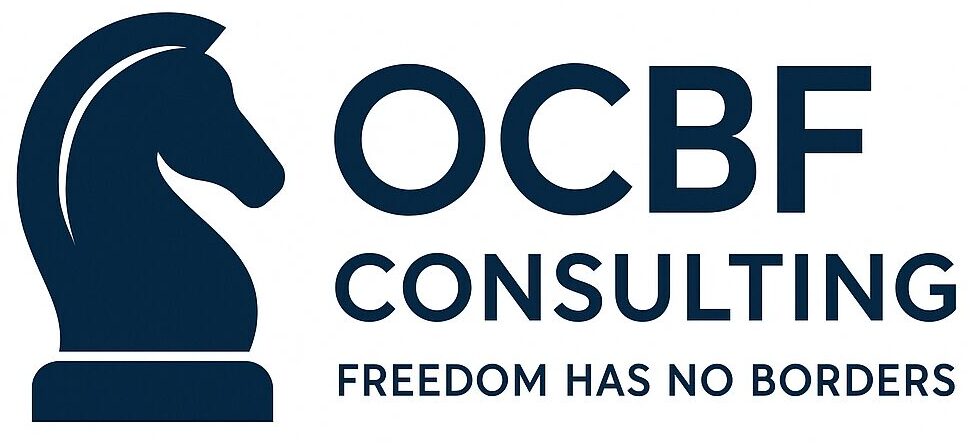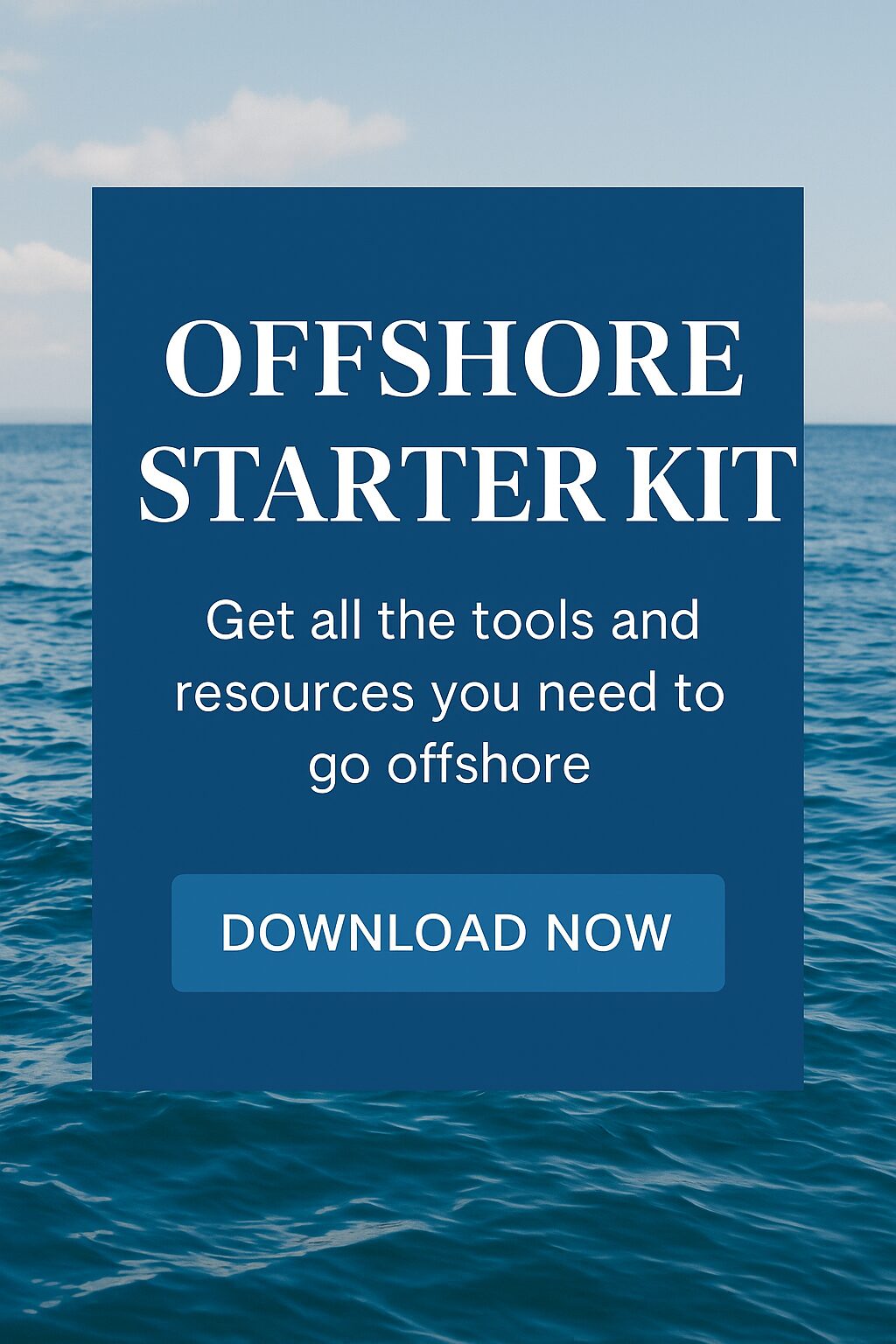The Moment Everything Froze
It began on a humid Hong Kong afternoon. Adrian Lee was halfway through his latte when an email from his bank landed in his inbox.
“Due to recent compliance updates, your account has been temporarily restricted pending verification.”
At first, he thought it was spam. Then he checked the sender. It wasn’t.
Within minutes, his payment gateway shut down, outgoing transfers were halted, and three contractors across two continents were waiting on invoices that couldn’t be paid. His business — a cross-border SaaS consultancy with clients from London to Singapore — had hit a wall.
“I wasn’t hiding anything,” Adrian says now. “But I realised how fragile everything was. One email, one compliance rule, and your entire business can freeze.”
That moment became the turning point. What began as a scramble to restore cash flow turned into a masterclass in global structuring — a case study in how legitimate offshore layering can create resilience, privacy, and control.
Why Offshore Structures Still Matter
There’s a mythology around offshore finance — sun-drenched tax havens, anonymous accounts, secret vaults. The reality is far more technical — and far more relevant to anyone who earns across borders.
Modern entrepreneurs like Adrian live in a financial ecosystem that’s increasingly transparent but maddeningly fragmented. A wire transfer from Hong Kong to Europe can pass through three compliance jurisdictions. Each bank asks for different documents. Each country has its own rules.
That’s where a multi-layered offshore structure comes in. It’s not about hiding money; it’s about creating compartments — financial firewalls that separate risks, functions, and jurisdictions. Think of it as architecture, not subterfuge.
In Adrian’s case, he needed something that could do four things at once:
protect personal assets, allow global banking, keep tax obligations clear, and demonstrate legitimacy to regulators.
“Offshore isn’t the wild west anymore,” says his advisor, a former trust officer from Jersey who now runs a boutique structuring firm in Singapore. “It’s more like chess. You can’t win by hiding your pieces — you win by positioning them.”

The First Meeting
The first consultation took place over coffee in Singapore’s Raffles Place district. Adrian brought a notepad filled with half-formed ideas: “Maybe a trust? A Cayman company? Something in Dubai?”
His advisor smiled. “Slow down. We start with purpose, not place.”
They began mapping his financial life like an ecosystem. His Hong Kong company handled client contracts. His personal investments sat in a private account under his name. His intellectual property — the real source of value — existed as lines of code on GitHub.
What he needed was separation. Each part of his business life had to live in a different legal “room,” with doors that could close independently if trouble came knocking.
That day, they sketched the first draft of what would become his multi-layered structure. It looked simple: a trust at the top, a holding company beneath, and an operating company below. But within that simplicity lay legal precision — each jurisdiction chosen for a reason, each layer performing a defined function.
Designing an Multi-Layered Offshore Structure
The planning stage took weeks. Dozens of emails, late-night calls, scanned documents flying across time zones. Eventually, the blueprint emerged — an elegant, pragmatic structure designed for both protection and function.
At the top sat a Cook Islands Trust — the gold standard of asset protection. It would act as the ultimate owner, shielding Adrian’s personal wealth from claims or litigation. The Cook Islands’ legal framework famously refuses to recognise foreign judgments, meaning no creditor or lawsuit from another country could pierce its walls.
Beneath that sat a Nevis LLC, a holding company owned by the trust. This was the control layer — the place where profits from his businesses could accumulate before being reinvested or distributed. Nevis offered flexible management rules and exceptional privacy while remaining fully legitimate.
Next came his Hong Kong Limited Company, the operating face of his business. This was where the contracts lived, where invoices were issued, where employees were paid. The company was real — an office address, business registration, accounts filed annually.
And finally, a fourth layer was added: a UAE Free Zone Company for intellectual property. It would hold and license his software code, earning royalty income under the UAE’s zero-tax framework and adding another layer of protection between his IP and his trading activities.
Each layer had its own logic, its own jurisdictional weather system. Together, they formed a protective climate — secure, compliant, and globally bankable.
The Human Side of Multi-Layered Offshore Structures
The first surprise was how manual the process felt. For all the talk of fintech efficiency, offshore incorporation is still a world of signatures, stamps, and apostilles.
“I thought it would be digital,” Adrian laughs. “It felt more like 1985.”
Every jurisdiction required notarised documents, proof of address, reference letters, compliance declarations. The Cook Islands trust alone needed ten separate certifications. And yet, through that bureaucracy came reassurance — every step was lawful, documented, and defensible.
The second surprise was the banks. Many refused to open accounts for Nevis companies, citing internal de-risking policies. Adrian’s first two applications were rejected.
Eventually, his advisor connected him to a smaller Caribbean electronic money institution that specialised in international clients. It wasn’t HSBC, but it worked — and it plugged into SEPA and SWIFT just fine.
“The irony,” he says, “was that my offshore accounts were more transparent than my old ones. The due diligence was ten times stricter.”
Making It Real
By the third month, the structure existed in full: documents signed, accounts opened, trustees appointed. The next challenge was to make it operational.
Money began to flow. Clients paid the Hong Kong company. After taxes and expenses, dividends moved up to the Nevis holding company. Royalties flowed sideways to the UAE entity for licensing the IP. Surplus profits were distributed to the Cook Islands trust, where they could be invested globally.
Everything had a reason. Everything left a trail.
Adrian also began documenting “substance” — board meetings, strategy discussions, email records — to prove that real decisions were being made across jurisdictions. It wasn’t enough to have a structure; it had to look and behave like one.
“There’s this idea that offshore is all smoke and mirrors,” his advisor said. “The truth is, the best structures are built on transparency. You show the right regulators the right paperwork — and they leave you alone.”
When the Stress Test Came
Six months later, one of Adrian’s European clients made a large payment that triggered another compliance review. The bank froze it pending verification. Déjà vu.
But this time, the difference was structural. The freeze affected only the Hong Kong entity — the outer shell. The Nevis and Cook Islands layers remained untouched. His trust assets, operating capital, and IP income all flowed as usual.
Within days, the documentation was supplied, the bank cleared the payment, and the system carried on.
“That’s when I got it,” he says. “Each layer is like a watertight compartment on a ship. One floods, but the vessel doesn’t sink.”
Counting the Costs
No structure is free. Adrian’s setup cost roughly USD 20,000 to establish and about half that annually to maintain. The ongoing expenses — trustee fees, renewals, accounting, registered agent services — were the price of durability.
But when he compared those costs to what he’d once lost from a single frozen payment, it seemed cheap.
He also gained something less tangible: confidence. “Now, if a bank changes policy or a country tightens its rules, I don’t panic,” he said. “My business can survive turbulence.”
Lessons From the Journey
After a year of operating within the structure, Adrian’s view of offshore finance had changed entirely. What once seemed exotic now felt like basic corporate hygiene.
He summarised his lessons over coffee one morning in Dubai, his new part-time base:
- Start with purpose. Each entity must have a clear function. Don’t build for show.
- Prioritise compliance. Transparency is the new privacy.
- Choose your partners carefully. The right trustee or agent is worth their weight in gold.
- Keep your story straight. If you can’t explain your structure clearly, you don’t understand it.
- Expect friction. Offshore doesn’t mean easy — it means resilient.
He smiled. “What used to scare me about offshore was the unknown. Now I see it’s just law, paperwork, and logic — applied intelligently.”

The Broader Picture
Offshore structures have evolved dramatically over the last decade. The secrecy days are gone. Today’s models are about protection through structure, not protection through opacity.
A multi-layered approach lets entrepreneurs separate risk zones — a lawsuit in one jurisdiction can’t sink assets in another. It also creates planning flexibility for cross-border living, international investments, and even crypto assets.
Yet, as experts point out, the system rewards discipline, not shortcuts. Each entity must be properly maintained: tax filings, renewals, resolutions, and economic-substance evidence.
“It’s like a garden,” says Adrian’s advisor. “If you don’t prune it, it grows wild — and regulators notice.”
The Aftermath
Two years after his banking freeze, Adrian’s life looks very different.
He now spends part of the year in Dubai, part in Singapore. His trust quietly manages his investments — a mix of equities, real estate, and venture funds. His holding company continues to expand into Asia and the Middle East.
When global markets wobble or new compliance rules drop, he shrugs. “I don’t react anymore. The structure reacts for me.”
He pauses before adding: “That’s the difference between being international and being unprepared.”
The Future of Offshore
As governments tighten transparency rules, the offshore world is moving toward a new kind of legitimacy — one based on governance, not secrecy. The next generation of entrepreneurs will treat offshore structuring not as an evasion tactic, but as essential infrastructure.
For people like Adrian, it already is.
“When borders blur,” he says, “structure becomes strategy. It’s not about hiding money; it’s about ensuring freedom.”
He looks down at his coffee, smiles, and adds: “It all started with that email — the one that froze my account. Sometimes you need to lose control to learn how to build it properly.”










